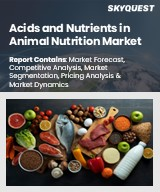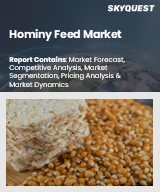
|
시장보고서
상품코드
1661582
인도의 와인 시장 평가 : 와인 유형별, 포장별, 소매 채널별, 생산량별, 지역별 - 기회 및 예측(2018-2032년)India Wine Market Assessment, By Wine Type, By Packaging, By Retail Channel, By Production, By Region, Opportunities, and Forecast, FY2018-FY2032F |
||||||
인도의 와인 시장은 가처분 소득 증가, 도시 소비자(특히 여성)의 라이프스타일 변화, 서유럽 문화와의 접촉, 외국인 비즈니스 및 레저 관광객 증가 등의 성장 요인에 힘입어 2025-2032년의 예측 기간 동안 17.41%의 두 자릿수대 CAGR을 나타낼 것으로 예상됩니다. 강력한 성장세를 보일 것으로 예상됩니다.
인도의 와인 시장 규모는 2024년 2억 7,056만 달러, 2032년에는 9억 7,702만 달러를 넘어설 것으로 예상됩니다. 이러한 성장에는 Z세대와 밀레니얼 세대의 인구가 6억 명을 넘어섰고, 법정 음주 연령을 넘어섰으며, 특히 도시 지역에서의 음주 문화에 대한 큰 변화 등 여러 가지 요인이 기여하고 있습니다. 와인을 포함한 음주는 이제 지위의 상징으로 여겨지고 있으며, 알코올 음료 소비에 대한 이전의 사회적, 문화적 금기가 사라지고 있습니다. 인도 전체 와인 소비량 중 수입 와인이 25% 이상을 차지하며, 나머지는 국내에서 생산되고 있습니다.
목차
제1장 제품 개요
제2장 주요 요약
제3장 고객의 소리
- 인구통계
- 브랜드 인지도와 로열티
- 브랜드 만족도
- 수량
- 가격
- 수량과 가격
- 포장
- 구입시에 고려하는 요소
- 구입 매체
- 구입 빈도
- 소비자에 의한 소매 채널 이해
- 책임 있는 소비
제4장 인도의 와인 시장 전망, 2018년-2032년
- 시장 규모와 예측
- 금액별
- 수량별
- 시장 점유율과 예측
- 와인 유형별
- 레드 와인
- 화이트 와인
- 로제 와인
- 스파클링 와인
- 알코올 강화 와인
- 기타
- 포장별
- 캔 와인
- 보틀 와인
- 소매 채널별
- 오프 프레미스
- 온프레미스
- 생산량별
- 현지산
- 수입 와인
- 지역별
- 동부
- 서부/중앙부
- 남부
- 북부
- 와인 유형별
제5장 인도의 와인 시장 마케팅 믹스
- 와인 유형별
- 포장별
- 소매 채널별
- 생산량별
- 지역별
제6장 매크로 비즈니스 환경 범위
- PESTEL 분석
- 정치적 요인
- 경제적 요인
- 사회적 요인
- 환경요인
- 법적 요인과 규제 정책
- 배포에 관한 라이선싱 조건을 포함한 정부법
- 수입 규제
- 과세 정책
- 비즈니스 용이도
- 가격 분석
- 마진 분석
- 밸류체인 분석
- 공급 수요 분석
- 수입 수출 분석
제7장 시장 역학
- 성장 원동력
- 성장 억제 원인
제8장 인프라와 시설 요건
제9장 시장 동향과 발전
제10장 베스트 프랙티스 사례 연구(최대 3개)
제11장 경쟁 구도
- 주요 5개 시장 리더의 핵심 역량과 주요 가치 제안
- 주요 5개 와인 회사의 총매출, 가격 결정, 수익성 분석
- 주요 5개사의 시장 점유율 분석
- 신규 기업과 대체 기업(해당하는 경우)
- 인수합병(M&A)/합작투자(해당하는 경우)
- SWOT 분석(시장 기업 - 5개사)
제12장 주요 기업 - 경쟁 구도
- Sula Vineyards Ltd
- 기업 개요
- 주요 경영진
- 제품 및 서비스
- 재무 상황(보고된 대로)
- 주요 시장 초점 및 지리적 입지
- 최근 동향
- Fratelli Wines Pvt Ltd
- Grover Zampa Vineyards Ltd
- Pernod Ricard India Private Ltd.
- Chateau Indage Vintners Private Limited
- York Winery Limited
- Soma Vine Village Private Limited
- SDU Winery Pvt Ltd.
- Four Seasons Wines Ltd
- KRSMA Estates Pvt. Ltd.
위에 언급된 회사는 시장 점유율에 따른 순위를 보유하지 않으며 조사 작업 중 이용 가능한 정보에 따라 변경될 수 있습니다.
제13장 전략적 제안
제14장 리서치사에 대해 & 면책사항
LSH 25.03.13The India wine market will witness a strong double digit CAGR of 17.41% during the forecast period between FY2025 and FY2032 led by growth drivers such as increasing disposable income, rapidly changing lifestyles among urban consumers particularly women, exposure to western cultures and growing number of foreign business and leisure tourists in India have contributed to the rising consumption of wine in India.
The wine market in India was valued at USD270.56 million in FY2024 and its value market size will increase above USD 977.02 million in FY2032. Multiple factors will contribute to this growth including the country's large Gen Z and Millennials population base of over 600 million that falls above the legal drinking age and major shift towards drinking culture especially in the urban areas. Drinking alcohol including wine is now increasingly considered as status symbol and the earlier social & cultural taboo around consumption of alcoholic beverages is disappearing. Among the total consumption of wine in terms of volume in India, imported wine accounted for more than 25 percent while the rest was produced locally.
Process for Wine Production
Wine is an alcoholic beverage that has an alcohol concentration between 5 and 13%. The earliest fermented food known to humankind is wine. The primary fruit used in the creation of many types of wine is grapes. Other fruits, such as the apple renowned for cider; the pear known for perry, and the plum known for table and white wines; are also used to produce wine.
Increase in Online Trade
The growth of Indian wine market is also being driven by the rise in the usage of online platforms for alcohol including wine purchases. Purchasing wine online adds to the convenience of the consumers. Thus, the manufacturers and retailers are now concentrating on creating new online wine trade platforms. Technology advancement and distribution of wine through e-commerce networks will lead to further grow of wine market in the forecast period.
Changing Lifestyles Acting as a Driver for India Wine Market
Changing lifestyles are one of the biggest drivers of the wine market in India. Urbanization and exposure to global cultures have changed the consumption pattern as more consumers, particularly young professionals and women, take to the Western dining habits. Demand for premium and health-conscious wine options has increased. Companies respond by developing organic and premium wine ranges and extension of their presence in metropolitan areas. With more people on the lookout for sophisticated and healthier drinking experiences, wine tourism and wine-related events are growing in number.
For instance, in October 2024, A major shareholder AV Thomas Group had infused USD 10.4 million in the Grover Zampa Vineyards in 2024. With this, the company has cut its focus into premium wines. This boost in capital would also help Grover Zampa Vineyards to develop more vineyards, upgrade the wine tourism properties, and procure new machinery. The company wants to capture new markets in North India and enhance its hospitality services, reflecting the changing lifestyles and preferences of urban consumers who are increasingly opting for premium and healthier wine options.
Health Benefit of Wine
Wine by-products are well-flavoured and visually appealing, which makes it easier to use them in the creation of new food products that are packed with health advantages. Wine and allied products possess antioxidant, antibacterial, anticancer and anti-inflammatory properties due to high polyphenol content.
Government Scheme
For the production and sale of wines in India, the state governments are in-charge of establishing laws for governing the imports of alcoholic beverages, including wine in their respective regions. The state's wine industry is considered as a small-scale industry for the purposes of trade and investment barriers established for small-scale businesses in India.
Impact of COVID-19 on India Wine Market
The wine and allied alcoholic beverages market had witnessed a significant decline during mid-2020 and mid-2021 because of the strict social distancing norms and lockdown imposed by the Indian government to curb the spread of COVID-19 pandemic. The widespread shutdown of numerous wine retail sites including the HoReCa sector and restrictions on public transport adversely impacted the distribution of wine throughout the country. However, the biggest change witnessed during the pandemic was the consumer's purchasing behaviour as they moved to online trade channels for buying wine. The industry is on a rapid recovery path in 2022 and early 2023 post relaxation of COVID-19 social distancing norms and opening of domestic and international tourism related sectors.
Impact of Russia-Ukraine War on India Wine Market
Indian wine farmers were affected in various ways because of the conflict in Ukraine and Russia. Due to the war between the two large European nations, grape exports were completely ceased by both of them. The drop in supply of grapes had affected the production of wine globally as well as in India.
Key Players Landscape and Outlook
India wine market report presents a comprehensive competitive landscape analysis and evaluates the competitive position of various players based on a variety of performance metrics. The report includes financials of the public/listed companies over the previous few years, their growth plans, product development, launch of new products, market share, investments, etc. For instance, Sula Vineyards Limited, the largest wine producer in the country holding market share above 50 percent expressed confidence to generate INR 10 billion in revenues by FY2024 while maintaining its profitability margin.
Table of Contents
1. Product Overview
2. Executive Summary
3. Voice of Customer
- 3.1. Demographics
- 3.2. Brand Awareness and Loyalty
- 3.3. Brand Satisfaction
- 3.3.1. Quantity
- 3.3.2. Price
- 3.3.3. Quantity w.r.t Price
- 3.3.4. Packaging
- 3.4. Factors Considered While Making Purchase
- 3.5. Medium of Purchase
- 3.6. Frequency of Purchase
- 3.7. Understanding of Retail Channels by Consumers
- 3.8. Responsible Consumption
4. India Wine Market Outlook, FY2018-FY2032F
- 4.1. Market Size & Forecast
- 4.1.1. By Value
- 4.1.2. By Volume
- 4.2. Market Share & Forecast
- 4.2.1. By Wine Type
- 4.2.1.1. Red Wine
- 4.2.1.2. White Wine
- 4.2.1.3. Rose Wine
- 4.2.1.4. Sparkling Wine
- 4.2.1.5. Fortified Wine
- 4.2.1.6. Others
- 4.2.2. By Packaging
- 4.2.2.1. Canned Wine
- 4.2.2.2. Bottled Wine
- 4.2.3. By Retail Channel
- 4.2.3.1. Off-Premises
- 4.2.3.1.1. E-Commerce
- 4.2.3.1.2. Multi-Brand Liquor Stores
- 4.2.3.1.3. Small Liquor Stores
- 4.2.3.1.4. Brand Vineyards
- 4.2.3.1.5. Duty-Free Stores
- 4.2.3.1.6. Canteen Stores Department
- 4.2.3.2. On-Premises
- 4.2.3.2.1. Restaurants (Fine Dine, Casual, Buy Your Own Liquor)
- 4.2.3.2.2. Cafe/Bars/Pubs
- 4.2.3.2.3. Distilleries
- 4.2.3.1. Off-Premises
- 4.2.4. By Production
- 4.2.4.1. Locally Produced
- 4.2.4.2. Imported Wine
- 4.2.5. By Region
- 4.2.5.1. East
- 4.2.5.2. West and Central
- 4.2.5.3. South
- 4.2.5.4. North
- 4.2.1. By Wine Type
5. Marketing Mix of India Wine Market
- 5.1. By Wine Type
- 5.2. By Packaging
- 5.3. By Retail Channel
- 5.4. By Production
- 5.5. By Region
6. Macro-Business Environmental Scope
- 6.1. PESTEL Analysis
- 6.1.1. Political Factors
- 6.1.2. Economic Factors
- 6.1.3. Social Factors
- 6.1.4. Environmental Factors
- 6.1.5. Legal Factors & Regulatory Policies
- 6.1.5.1. Government Laws including Licensing Terms for Distribution
- 6.1.5.2. Importing Regulations
- 6.1.5.3. Taxation Policies
- 6.2. Ease of Doing Business
- 6.3. Pricing Analysis
- 6.4. Margin Analysis
- 6.5. Value Chain Analysis
- 6.6. Supply Demand Analysis
- 6.7. Import Export Analysis
7. Market Dynamics
- 7.1. Growth Drivers
- 7.2. Growth Inhibitors
8. Infrastructure and Facilities Requirements
9. Market Trends & Developments
10. Best Practice Case Studies (Upto Three)
11. Competitive Landscape
- 11.1. Core Competence and Key Value Proposition of Top Five Market Leaders
- 11.2. Overall Revenue, Pricing and Profitability Analysis of Top Five Wine Companies
- 11.3. Market Share Analysis of Top Five Players
- 11.4. Emerging Players and Substitutes (If Any)
- 11.5. Mergers & Acquisitions/ Joint Ventures (If Applicable)
- 11.6. SWOT Analysis (For Five Market Players)
12. Leading Players - Competitive Landscape
- 12.1. Sula Vineyards Ltd
- 12.1.1. Company Details
- 12.1.2. Key Management Personnel
- 12.1.3. Products & Services
- 12.1.4. Financials (As reported)
- 12.1.5. Key Market Focus & Geographical Presence
- 12.1.6. Recent Developments
- 12.2. Fratelli Wines Pvt Ltd
- 12.3. Grover Zampa Vineyards Ltd
- 12.4. Pernod Ricard India Private Ltd.
- 12.5. Chateau Indage Vintners Private Limited
- 12.6. York Winery Limited
- 12.7. Soma Vine Village Private Limited
- 12.8. SDU Winery Pvt Ltd.
- 12.9. Four Seasons Wines Ltd
- 12.10. KRSMA Estates Pvt. Ltd.
Companies mentioned above DO NOT hold any order as per market share and can be changed as per information available during research work



















